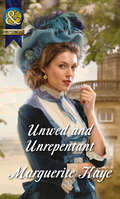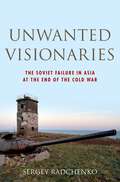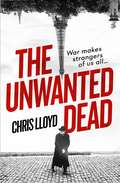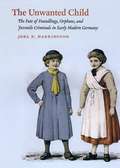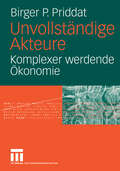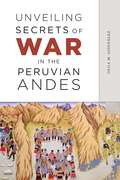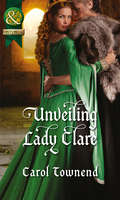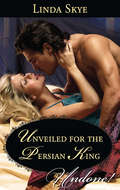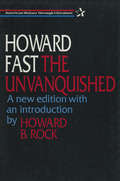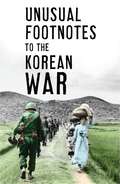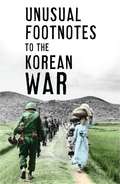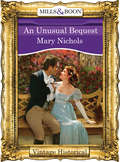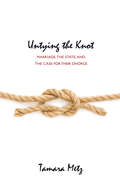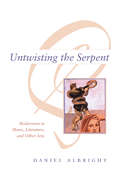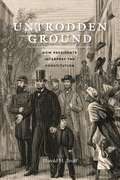- Table View
- List View
Unwed and Unrepentant: Unwed And Unrepentant Return Of The Prodigal Gilvry A Traitor's Touch (The Armstrong Sisters #5)
by Marguerite KayePRETEND ENGAGEMENT
Unwanted Visionaries: The Soviet Failure in Asia at the End of the Cold War (Oxford Studies in International History)
by Sergey RadchenkoMikhail Gorbachev's relations with the West have captured the imagination of contemporaries and historians alike, but his vision of Soviet leadership in Asia has received far less attention. The failure of Gorbachev's Asian initiatives has had dramatic consequences, by the late 1980s, the Soviet Union was in full retreat from Asia, and since the Soviet collapse, Russia has been left on the sidelines of the "Pacific century." In this exceptionally wide-ranging and deeply researched book, Sergey Radchenko offers an illuminating account of the end of the Cold War in the East, tracing the death of Soviet ambitions in Asia. Radchenko shows that Gorbachev began with big gestures, of which the most important was his initiative in Vladivostok in July 1986, the opening salvo of the Soviet charm offensive in Asia Pacific. The problem, Radchenko points out, was that no one in Asia bought into Gorbachev's vision. If the Soviets had realized earlier that they needed Asia more than Asia needed them, they might have played a much more important role there. Instead, China was largely misunderstood, early gains in India were squandered, Japan was ignored or condescended to, and the Korean scenario played out in ways most unfavorable to Russia. Radchenko captures all of this in his compelling narrative, shedding important new light on many key players, including Gorbachev, Deng Xiaoping, Margaret Thatcher, Boris Yeltsin, and George H. W. Bush, among others. Based on archival research in Russia, China, Mongolia, India, the United States, Britain, and numerous European countries and on interviews with former policy makers in a dozen countries, Unwanted Visionaries presents a deftly narrated and penetrating portrait of the Soviet failure in the East, with a wealth of valuable insight into Asia today.
Unwanted Visionaries: The Soviet Failure in Asia at the End of the Cold War (Oxford Studies in International History)
by Sergey RadchenkoMikhail Gorbachev's relations with the West have captured the imagination of contemporaries and historians alike, but his vision of Soviet leadership in Asia has received far less attention. The failure of Gorbachev's Asian initiatives has had dramatic consequences, by the late 1980s, the Soviet Union was in full retreat from Asia, and since the Soviet collapse, Russia has been left on the sidelines of the "Pacific century." In this exceptionally wide-ranging and deeply researched book, Sergey Radchenko offers an illuminating account of the end of the Cold War in the East, tracing the death of Soviet ambitions in Asia. Radchenko shows that Gorbachev began with big gestures, of which the most important was his initiative in Vladivostok in July 1986, the opening salvo of the Soviet charm offensive in Asia Pacific. The problem, Radchenko points out, was that no one in Asia bought into Gorbachev's vision. If the Soviets had realized earlier that they needed Asia more than Asia needed them, they might have played a much more important role there. Instead, China was largely misunderstood, early gains in India were squandered, Japan was ignored or condescended to, and the Korean scenario played out in ways most unfavorable to Russia. Radchenko captures all of this in his compelling narrative, shedding important new light on many key players, including Gorbachev, Deng Xiaoping, Margaret Thatcher, Boris Yeltsin, and George H. W. Bush, among others. Based on archival research in Russia, China, Mongolia, India, the United States, Britain, and numerous European countries and on interviews with former policy makers in a dozen countries, Unwanted Visionaries presents a deftly narrated and penetrating portrait of the Soviet failure in the East, with a wealth of valuable insight into Asia today.
The Unwanted Dead
by Chris LloydParis, Friday 14th June 1940. The day the Nazis march into Paris. It made headlines around the globe. Paris police detective Eddie Giral - a survivor of the last World War - watches helplessly on as his world changes forever. But there is something he still has control over. Finding whoever is responsible for the murder of four refugees. The unwanted dead, who no one wants to claim. To do so, he must tread carefully between the Occupation and the Resistance, between truth and lies, between the man he is and the man he was. All the while becoming whoever he must be to survive in this new and terrible order descending on his home.
The Unwanted Child: The Fate of Foundlings, Orphans, and Juvenile Criminals in Early Modern Germany
by Joel F. HarringtonThe baby abandoned on the doorstep is a phenomenon that has virtually disappeared from our experience, but in the early modern world, unwanted children were a very real problem for parents, government officials, and society. The Unwanted Child skillfully recreates sixteenth-century Nuremberg to explore what befell abandoned, neglected, abused, or delinquent children in this critical period. Joel F. Harrington tackles this question by focusing on the stories of five individuals. In vivid and poignant detail, he recounts the experiences of an unmarried mother-to-be, a roaming mercenary who drifts in and out of his children’s lives, a civic leader handling the government’s response to problems arising from unwanted children, a homeless teenager turned prolific thief, and orphaned twins who enter state care at the age of nine. Braiding together these compelling portraits, Harrington uncovers and analyzes the key elements that link them, including the impact of war and the vital importance of informal networks among women. From the harrowing to the inspiring, The Unwanted Child paints a gripping picture of life on the streets five centuries ago.
The Unwanted Child: The Fate of Foundlings, Orphans, and Juvenile Criminals in Early Modern Germany
by Joel F. HarringtonThe baby abandoned on the doorstep is a phenomenon that has virtually disappeared from our experience, but in the early modern world, unwanted children were a very real problem for parents, government officials, and society. The Unwanted Child skillfully recreates sixteenth-century Nuremberg to explore what befell abandoned, neglected, abused, or delinquent children in this critical period. Joel F. Harrington tackles this question by focusing on the stories of five individuals. In vivid and poignant detail, he recounts the experiences of an unmarried mother-to-be, a roaming mercenary who drifts in and out of his children’s lives, a civic leader handling the government’s response to problems arising from unwanted children, a homeless teenager turned prolific thief, and orphaned twins who enter state care at the age of nine. Braiding together these compelling portraits, Harrington uncovers and analyzes the key elements that link them, including the impact of war and the vital importance of informal networks among women. From the harrowing to the inspiring, The Unwanted Child paints a gripping picture of life on the streets five centuries ago.
The Unwanted Child: The Fate of Foundlings, Orphans, and Juvenile Criminals in Early Modern Germany
by Joel F. HarringtonThe baby abandoned on the doorstep is a phenomenon that has virtually disappeared from our experience, but in the early modern world, unwanted children were a very real problem for parents, government officials, and society. The Unwanted Child skillfully recreates sixteenth-century Nuremberg to explore what befell abandoned, neglected, abused, or delinquent children in this critical period. Joel F. Harrington tackles this question by focusing on the stories of five individuals. In vivid and poignant detail, he recounts the experiences of an unmarried mother-to-be, a roaming mercenary who drifts in and out of his children’s lives, a civic leader handling the government’s response to problems arising from unwanted children, a homeless teenager turned prolific thief, and orphaned twins who enter state care at the age of nine. Braiding together these compelling portraits, Harrington uncovers and analyzes the key elements that link them, including the impact of war and the vital importance of informal networks among women. From the harrowing to the inspiring, The Unwanted Child paints a gripping picture of life on the streets five centuries ago.
Unvollständige Akteure: Komplexer werdende Ökonomie
by Birger P. PriddatDie Ökonomie klärt sich auf vielen Ebenen über sich selbst auf: in der institutional economcis, in der evolutionary economics, in der neueren Rationalitätsdiskussion etc. Die Fähigkeit der Akteure, rational zu entscheiden, ist nicht kontextunabhängig. Neuere Theorien sind gefragt und zu erörtern, vor allem die epistemologische Leistungsfähigkeit verschiedener ökonomischer Theorien. Die Lage ist offen. Der Perfektionismus des methodologischen Individuums (aus den Anfängen des 20. Jahrhunderts) ist einer Zulassung von bounded rationality gewichen. Aber bounded rationality ist nur eine beschränktere Sichtweise des rational choice. Sind solche Formen der choices legitim? nützlich? Das Buch untersucht verschiedene Möglichkeiten. Eine interessante Variante ist die der ‚kommunikativen Steuerung'. ‚Unvollständige Akteure' sind komplettierungsoffen. Hier lassen sich Marktszenen ‚steuern'. ‚Unvollständige Akteure' sind adaptionsoffen. Sie leben riskant. Sie sind ‚legalisierte Wildheit', deswegen faszinierend.
Unveiling Secrets of War in the Peruvian Andes
by Olga M. GonzálezThe Maoist guerrilla group Shining Path launched its violent campaign against the government in Peru’s Ayacucho region in 1980. When the military and counterinsurgency police forces were dispatched to oppose the insurrection, the violence quickly escalated. The peasant community of Sarhua was at the epicenter of the conflict, and this small village is the focus of Unveiling Secrets of War in the Peruvian Andes. There, nearly a decade after the event, Olga M. González follows the tangled thread of a public secret: the disappearance of Narciso Huicho, the man blamed for plunging Sarhua into a conflict that would sunder the community for years. Drawing on extensive fieldwork and a novel use of a cycle of paintings, González examines the relationship between secrecy and memory. Her attention to the gaps and silences within both the Sarhuinos’ oral histories and the paintings reveals the pervasive reality of secrecy for people who have endured episodes of intense violence. González conveys how public secrets turn the process of unmasking into a complex mode of truth telling. Ultimately, public secrecy is an intricate way of “remembering to forget” that establishes a normative truth that makes life livable in the aftermath of a civil war.
Unveiling Lady Clare: Scandal's Virgin / Risk Of A Lifetime / Taming Her Italian Boss / The Gentleman Rogue / Unveiling Lady Clare / The Heir Of The Castle (Knights of Champagne #2)
by Carol TownendThe secrets behind her eyes Sir Arthur Ferrer catches sight of her among the stands at the Twelfth Night joust. There is something about her eyes…. He's seen them before. But when he goes to find the mysterious woman who has so captivated him, she's disappeared!
Unveiled for the Persian King (Mills And Boon Historical Undone Ser.)
by Linda SkyeDarius, King of Persia, has many beautiful women in his harem—but none entice him more than his latest prize: Myrine of Scythia.
The Unvanquished
by Howard FastOriginally published in 1942, The Unvanquished is the story of the Continental Army and George Washington in the desperate early months when the American Revolution faced defeat and disintegration. The book begins with the retreat across Manhattan's East River that saved the Continental Army after the Battle of Long Island. It ends with Washington's recrossing of the Delaware in the daring 1776 Christmas Eve raid on the Hessian camp at Trenton.
The Unvanquished
by Howard FastOriginally published in 1942, The Unvanquished is the story of the Continental Army and George Washington in the desperate early months when the American Revolution faced defeat and disintegration. The book begins with the retreat across Manhattan's East River that saved the Continental Army after the Battle of Long Island. It ends with Washington's recrossing of the Delaware in the daring 1776 Christmas Eve raid on the Hessian camp at Trenton.
Unusual Footnotes to the Korean War (Osprey Digital Ser.)
by Paul EdwardsA 'forgotten war' in modern history, the Korean War is rarely given much recognition or studied in detailed. In fact, it was one of the bloodiest conflicts of the 20th century, a deadly clash of world-views as the UN allied itself with South Korea against the massed ranks of North Korean armies backed by Communist China. In this new book, Paul Edwards presents a fresh look at the Korean War, focusing on a number of unusual events that happened during the conflict. Beginning with a look at the war itself, Edwards goes onto tell the stories of the Salvation Army band that disappeared; UFO sightings; the Pulitzer Prize winning journalist, Maggie Higgins, and her battle to report in Korea as an equal with her male counterparts; and an operation to rescue orphan children. It also provides a fascinating look at the propaganda materials dropped over Korea by both sides. This miscellany of the war allows readers to dip in and out of this e-book only title, a perfect e-book for the daily commute.
Unusual Footnotes to the Korean War
by Paul EdwardsA 'forgotten war' in modern history, the Korean War is rarely given much recognition or studied in detailed. In fact, it was one of the bloodiest conflicts of the 20th century, a deadly clash of world-views as the UN allied itself with South Korea against the massed ranks of North Korean armies backed by Communist China. In this new book, Paul Edwards presents a fresh look at the Korean War, focusing on a number of unusual events that happened during the conflict. Beginning with a look at the war itself, Edwards goes onto tell the stories of the Salvation Army band that disappeared; UFO sightings; the Pulitzer Prize winning journalist, Maggie Higgins, and her battle to report in Korea as an equal with her male counterparts; and an operation to rescue orphan children. It also provides a fascinating look at the propaganda materials dropped over Korea by both sides. This miscellany of the war allows readers to dip in and out of this e-book only title, a perfect e-book for the daily commute.
An Unusual Bequest (Mills And Boon Historical Ser.)
by Mary NicholsWidowed Lady Charlotte Hobart and her two young daughters have lived comfortably under her father- in-law's roof, but everything changes on his death. The new Lord Hobart fills Easterley Manor with his disreputable friends and treats Charlotte with contempt. With no money, and nowhere to go, she feels suddenly bereft–and not a little frightened.
Untying the Knot: Marriage, the State, and the Case for Their Divorce
by Tamara MetzMarriage is at the center of one of today's fiercest political debates. Activists argue about how to define it, judges and legislators decide who should benefit from it, and scholars consider how the state should protect those who are denied it. Few, however, ask whether the state should have anything to do with marriage in the first place. In Untying the Knot, Tamara Metz addresses this crucial question, making a powerful argument that marriage, like religion, should be separated from the state. Rather than defining or conferring marriage, or relying on it to achieve legitimate public welfare goals, the state should create a narrow legal status that supports all intimate caregiving unions. Marriage itself should be bestowed by those best suited to give it the necessary ethical authority--religious groups and other kinds of communities. Divorcing the state from marriage is dictated by nothing less than basic commitments to freedom and equality. Tracing confusions about marriage to tensions at the heart of liberalism, Untying the Knot clarifies today's debates about marriage by identifying and explaining assumptions hidden in widely held positions and common practices. It shows that, as long as marriage and the state are linked, marriage will be a threat to liberalism and the state will be a threat to marriage. An important and timely rethinking of the relationship between marriage and the state, Untying the Knot will interest political theorists, legal scholars, policymakers, sociologists, and anyone else who cares about the fate of marriage or liberalism.
Untying the Knot: Marriage, the State, and the Case for Their Divorce
by Tamara MetzMarriage is at the center of one of today's fiercest political debates. Activists argue about how to define it, judges and legislators decide who should benefit from it, and scholars consider how the state should protect those who are denied it. Few, however, ask whether the state should have anything to do with marriage in the first place. In Untying the Knot, Tamara Metz addresses this crucial question, making a powerful argument that marriage, like religion, should be separated from the state. Rather than defining or conferring marriage, or relying on it to achieve legitimate public welfare goals, the state should create a narrow legal status that supports all intimate caregiving unions. Marriage itself should be bestowed by those best suited to give it the necessary ethical authority--religious groups and other kinds of communities. Divorcing the state from marriage is dictated by nothing less than basic commitments to freedom and equality. Tracing confusions about marriage to tensions at the heart of liberalism, Untying the Knot clarifies today's debates about marriage by identifying and explaining assumptions hidden in widely held positions and common practices. It shows that, as long as marriage and the state are linked, marriage will be a threat to liberalism and the state will be a threat to marriage. An important and timely rethinking of the relationship between marriage and the state, Untying the Knot will interest political theorists, legal scholars, policymakers, sociologists, and anyone else who cares about the fate of marriage or liberalism.
Untwisting the Serpent: Modernism in Music, Literature, and Other Arts
by Daniel AlbrightFrom its dissonant musics to its surrealist spectacles (the urinal is a violin!), Modernist art often seems to give more frustration than pleasure to its audience. In Untwisting the Serpent, Daniel Albright shows that this perception arises partly because we usually consider each art form in isolation, even though many of the most important artistic experiments of the Modernists were collaborations involving several media—Igor Stravinsky's The Rite of Spring is a ballet, Gertrude Stein's Four Saints in Three Acts is an opera, and Pablo Picasso turned his cubist paintings into costumes for Parade. Focusing on collaborations with a musical component, Albright views these works as either figures of dissonance that try to retain the distinctness of their various media (e.g. Guillaume Apollinaire's Les Mamelles de Tirésias) or figures of consonance that try to lose themselves in some total effect (e.g. Arnold Schoenberg's Erwartung). In so doing he offers a fresh picture of Modernism, and provides a compelling model for the analysis of all artistic collaborations. Untwisting the Serpent is the recipient of the 2001 Susanne M. Glasscock Humanities Book Prize for Interdisciplinary Scholarship of the Center for Humanities Research at Texas A&M University.
Untrodden Ground: How Presidents Interpret the Constitution
by Harold H. BruffWhen Thomas Jefferson struck a deal for the Louisiana Purchase in 1803, he knew he was adding a new national power to those specified in the Constitution, but he also believed his actions were in the nation’s best interest. His successors would follow his example, setting their own constitutional precedents. Tracing the evolution and expansion of the president’s formal power, Untrodden Ground reveals the president to be the nation’s most important law interpreter and examines how our commanders-in-chief have shaped the law through their responses to important issues of their time. Reviewing the processes taken by all forty-four presidents to form new legal precedents and the constitutional conventions that have developed as a result, Harold H. Bruff shows that the president is both more and less powerful than many suppose. He explores how presidents have been guided by both their predecessors’ and their own interpretations of constitutional text, as well as how they implement policies in ways that statutes do not clearly authorize or forbid. But while executive power has expanded far beyond its original conception, Bruff argues that the modern presidency is appropriately limited by the national political process—their actions are legitimized by the assent of Congress and the American people or rejected through debilitating public outcry, judicial invalidation, reactive legislation, or impeachment. Synthesizing over two hundred years of presidential activity and conflict, this timely book casts new light on executive behavior and the American constitutional system.
Untrodden Ground: How Presidents Interpret the Constitution
by Harold H. BruffWhen Thomas Jefferson struck a deal for the Louisiana Purchase in 1803, he knew he was adding a new national power to those specified in the Constitution, but he also believed his actions were in the nation’s best interest. His successors would follow his example, setting their own constitutional precedents. Tracing the evolution and expansion of the president’s formal power, Untrodden Ground reveals the president to be the nation’s most important law interpreter and examines how our commanders-in-chief have shaped the law through their responses to important issues of their time. Reviewing the processes taken by all forty-four presidents to form new legal precedents and the constitutional conventions that have developed as a result, Harold H. Bruff shows that the president is both more and less powerful than many suppose. He explores how presidents have been guided by both their predecessors’ and their own interpretations of constitutional text, as well as how they implement policies in ways that statutes do not clearly authorize or forbid. But while executive power has expanded far beyond its original conception, Bruff argues that the modern presidency is appropriately limited by the national political process—their actions are legitimized by the assent of Congress and the American people or rejected through debilitating public outcry, judicial invalidation, reactive legislation, or impeachment. Synthesizing over two hundred years of presidential activity and conflict, this timely book casts new light on executive behavior and the American constitutional system.
Untrodden Ground: How Presidents Interpret the Constitution
by Harold H. BruffWhen Thomas Jefferson struck a deal for the Louisiana Purchase in 1803, he knew he was adding a new national power to those specified in the Constitution, but he also believed his actions were in the nation’s best interest. His successors would follow his example, setting their own constitutional precedents. Tracing the evolution and expansion of the president’s formal power, Untrodden Ground reveals the president to be the nation’s most important law interpreter and examines how our commanders-in-chief have shaped the law through their responses to important issues of their time. Reviewing the processes taken by all forty-four presidents to form new legal precedents and the constitutional conventions that have developed as a result, Harold H. Bruff shows that the president is both more and less powerful than many suppose. He explores how presidents have been guided by both their predecessors’ and their own interpretations of constitutional text, as well as how they implement policies in ways that statutes do not clearly authorize or forbid. But while executive power has expanded far beyond its original conception, Bruff argues that the modern presidency is appropriately limited by the national political process—their actions are legitimized by the assent of Congress and the American people or rejected through debilitating public outcry, judicial invalidation, reactive legislation, or impeachment. Synthesizing over two hundred years of presidential activity and conflict, this timely book casts new light on executive behavior and the American constitutional system.
Untrodden Ground: How Presidents Interpret the Constitution
by Harold H. BruffWhen Thomas Jefferson struck a deal for the Louisiana Purchase in 1803, he knew he was adding a new national power to those specified in the Constitution, but he also believed his actions were in the nation’s best interest. His successors would follow his example, setting their own constitutional precedents. Tracing the evolution and expansion of the president’s formal power, Untrodden Ground reveals the president to be the nation’s most important law interpreter and examines how our commanders-in-chief have shaped the law through their responses to important issues of their time. Reviewing the processes taken by all forty-four presidents to form new legal precedents and the constitutional conventions that have developed as a result, Harold H. Bruff shows that the president is both more and less powerful than many suppose. He explores how presidents have been guided by both their predecessors’ and their own interpretations of constitutional text, as well as how they implement policies in ways that statutes do not clearly authorize or forbid. But while executive power has expanded far beyond its original conception, Bruff argues that the modern presidency is appropriately limited by the national political process—their actions are legitimized by the assent of Congress and the American people or rejected through debilitating public outcry, judicial invalidation, reactive legislation, or impeachment. Synthesizing over two hundred years of presidential activity and conflict, this timely book casts new light on executive behavior and the American constitutional system.
Untrodden Ground: How Presidents Interpret the Constitution
by Harold H. BruffWhen Thomas Jefferson struck a deal for the Louisiana Purchase in 1803, he knew he was adding a new national power to those specified in the Constitution, but he also believed his actions were in the nation’s best interest. His successors would follow his example, setting their own constitutional precedents. Tracing the evolution and expansion of the president’s formal power, Untrodden Ground reveals the president to be the nation’s most important law interpreter and examines how our commanders-in-chief have shaped the law through their responses to important issues of their time. Reviewing the processes taken by all forty-four presidents to form new legal precedents and the constitutional conventions that have developed as a result, Harold H. Bruff shows that the president is both more and less powerful than many suppose. He explores how presidents have been guided by both their predecessors’ and their own interpretations of constitutional text, as well as how they implement policies in ways that statutes do not clearly authorize or forbid. But while executive power has expanded far beyond its original conception, Bruff argues that the modern presidency is appropriately limited by the national political process—their actions are legitimized by the assent of Congress and the American people or rejected through debilitating public outcry, judicial invalidation, reactive legislation, or impeachment. Synthesizing over two hundred years of presidential activity and conflict, this timely book casts new light on executive behavior and the American constitutional system.
Untrodden Ground: How Presidents Interpret the Constitution
by Harold H. BruffWhen Thomas Jefferson struck a deal for the Louisiana Purchase in 1803, he knew he was adding a new national power to those specified in the Constitution, but he also believed his actions were in the nation’s best interest. His successors would follow his example, setting their own constitutional precedents. Tracing the evolution and expansion of the president’s formal power, Untrodden Ground reveals the president to be the nation’s most important law interpreter and examines how our commanders-in-chief have shaped the law through their responses to important issues of their time. Reviewing the processes taken by all forty-four presidents to form new legal precedents and the constitutional conventions that have developed as a result, Harold H. Bruff shows that the president is both more and less powerful than many suppose. He explores how presidents have been guided by both their predecessors’ and their own interpretations of constitutional text, as well as how they implement policies in ways that statutes do not clearly authorize or forbid. But while executive power has expanded far beyond its original conception, Bruff argues that the modern presidency is appropriately limited by the national political process—their actions are legitimized by the assent of Congress and the American people or rejected through debilitating public outcry, judicial invalidation, reactive legislation, or impeachment. Synthesizing over two hundred years of presidential activity and conflict, this timely book casts new light on executive behavior and the American constitutional system.
